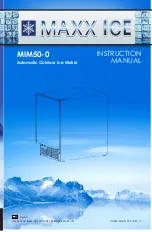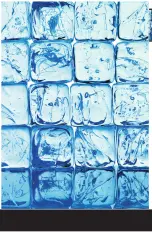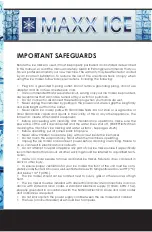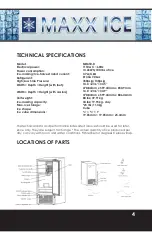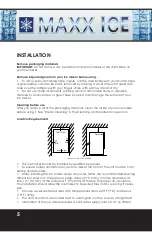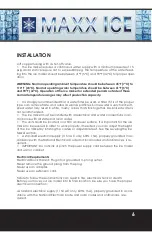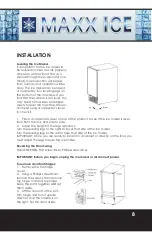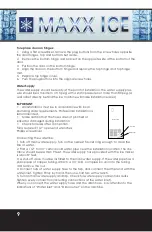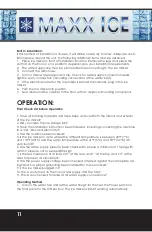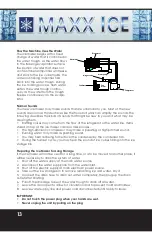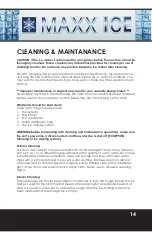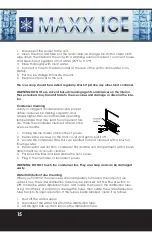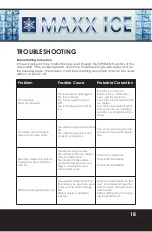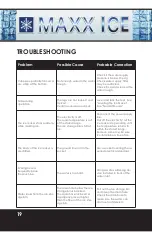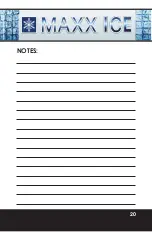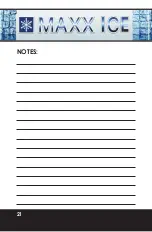
6
soft copper tubing with a shut-off valve.
•
The ice maker requires a continuous water supply with a minimum pressure of 15
psig and a static pressure not to exceed 80 psig. The temperature of the water feed-
ing into the ice maker should be between 41°F (5°C) and 90°F (32°C) for proper oper-
ation.
WARNING: Normal operating ambient temperature should be between 45°F (7°C) to
110° F (43°C). Normal operating water temperature should be between 41°F (5°C)
and 90°F (32°C). Operation of the ice maker for extended periods outside of these
normal temperature ranges may affect production capacity.
•
It is strongly recommended that a water filter be used. A filter, if it is of the proper
type, can remove taste and odors as well as particles. Some water is very hard; soft-
ened water may result in white, mushy cubes that stick together. De-ionized water is
not recommended.
•
The ice maker must be installed with all electrical and water connections in ac-
cordance with all state and local codes.
•
The unit should be located on a firm and level surface. It is important for the ice
maker to be leveled in order to work properly. If needed, you can adjust the height
of the ice maker by rotating the casters or adjustable feet. See the Leveling the Ice
Maker section.
•
A standard electrical supply (115V AC only, 60Hz, 15A), properly grounded in ac-
cordance with the National Electrical Code and local codes and ordinances, is re-
quired.
•
IMPORTANT: Do not kink or pinch the power supply cord between the ice maker
and wall or cabinet.
Electrical Requirements
Electrical Shock Hazard: Plug into a grounded 3- prong outlet.
Never remove the ground prong from the plug.
Never use an adapter.
Never use an extension cord.
Failure to follow these instructions can result in fire, electrical shock or death.
Before you move your ice maker into its final location, be sure you have the proper
electrical connection:
A standard electrical supply (115V AC only, 60Hz, 15A), properly grounded in accor-
dance with the National Electrical Code and local codes and ordinances, is re-
quired.
INSTALLATION

